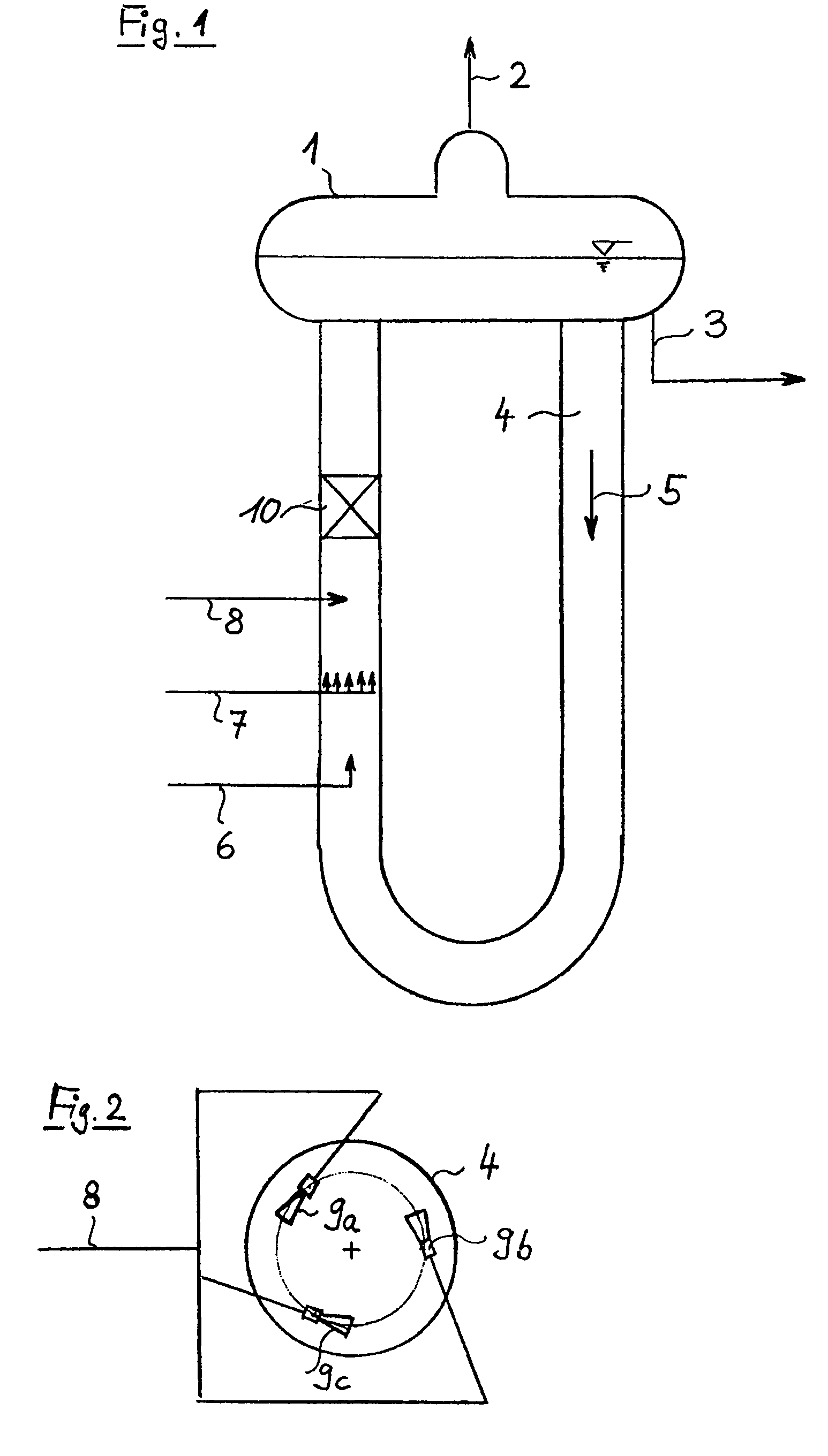Method for producing 1,2-dichloroethane by means of direct chlorination
a dichloroethane and direct chlorination technology, applied in the direction of liquid-gas reaction process, liquid-gas reaction of thin-film type, mixer, etc., can solve the problems of adversely affecting mass transfer, surface area available, and difficulty in subsequent increase in capacity
- Summary
- Abstract
- Description
- Claims
- Application Information
AI Technical Summary
Benefits of technology
Problems solved by technology
Method used
Image
Examples
Embodiment Construction
[0015]This task is realised in compliance with the technical details in claim 1. The said objective is solved as described below, the feed points for chlorine and dissolved ethylene being arranged in the leg of the loop in which the liquid can ascend, and any upstream feed point for ethylene being followed by a feed point for dissolved chlorine:[0016]any feed point for chlorine is followed by at least one feed point for EDC,[0017]the addition of liquid EDC takes place with so much kinetic energy that a thorough mixture of EDC, dissolved chlorine and ethylene is effected.
[0018]Liquid EDC is normally available in most plants of this type because EDC, as a rule, is withdrawn from the reaction vessel and recycled for heat recovery. The EDC cooled slightly down is normally recycled to the leg section of the reaction vessel in which the downflow of liquid weakens. This permits the downflow of the liquid to be enhanced by an additional pulse reinforcing the natural circulation. It was now ...
PUM
 Login to View More
Login to View More Abstract
Description
Claims
Application Information
 Login to View More
Login to View More - R&D
- Intellectual Property
- Life Sciences
- Materials
- Tech Scout
- Unparalleled Data Quality
- Higher Quality Content
- 60% Fewer Hallucinations
Browse by: Latest US Patents, China's latest patents, Technical Efficacy Thesaurus, Application Domain, Technology Topic, Popular Technical Reports.
© 2025 PatSnap. All rights reserved.Legal|Privacy policy|Modern Slavery Act Transparency Statement|Sitemap|About US| Contact US: help@patsnap.com



